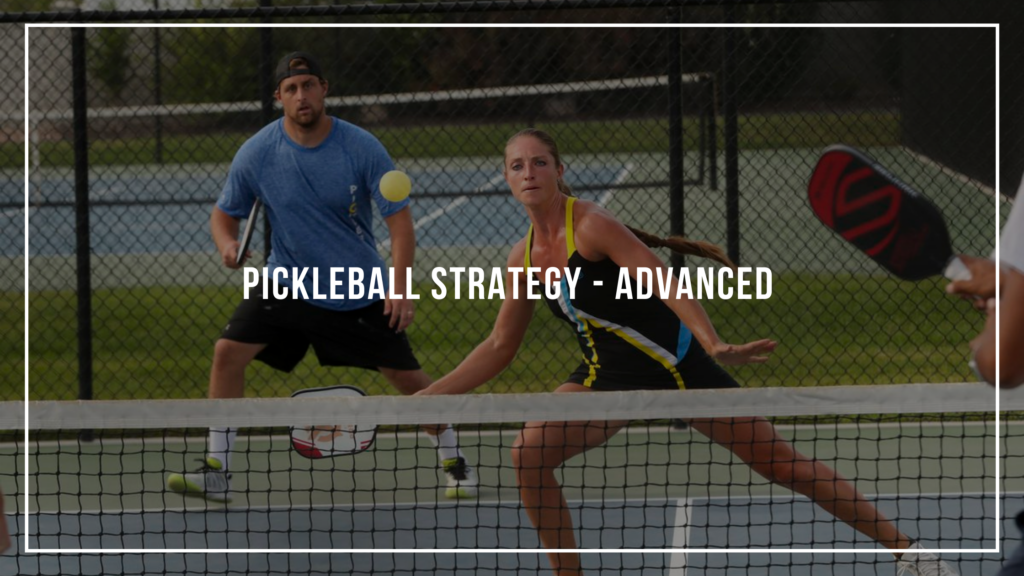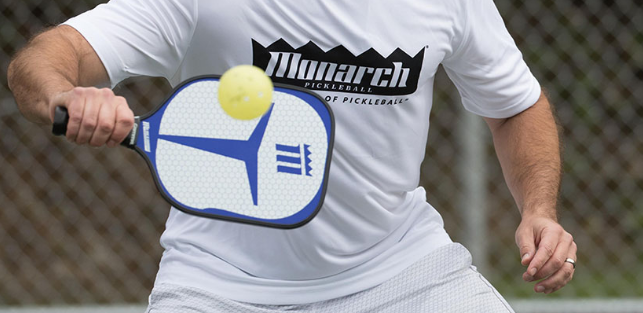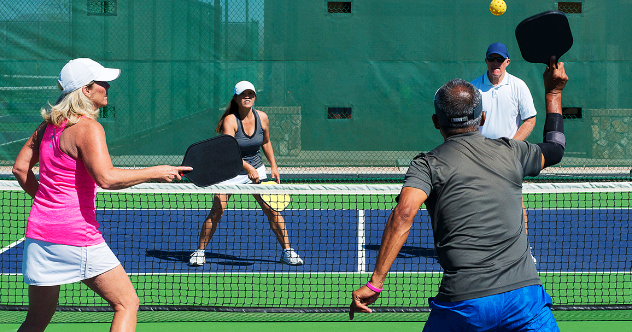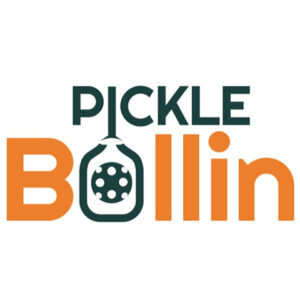
A good game of pickleball can get even better with an advanced strategy. If you’ve practiced all the moves and have a decent idea of strategy, it’s time to stretch out a little bit. Read on to learn about Pickleball Strategy – Advanced.
Try Some New Moves
One thing I love about Pickleball is the fun that you can have changing how you approach different moves to throw your opponent off. For example, you can change the way you return the ball with different spin techniques. You can practice how you control your body and your strength of return.
Topspin and Backspin
Topspin is a move borrowed from tennis, where you change your swing from flat to a low-to-high arc. Your paddle is also angled slightly forward. In other words, rather than swinging your paddle straight, you gently arc it forward. The move allows the ball to travel lower to the net but also faster right off the bounce.
The backspin works the opposite way. Rather than low-to-high, you go high-to-low. Instead of arcing your paddle forward, you tilt it backward. The backspin is perfect for throwing your opponent off since it makes the ball move a lot slower than usual. I love the backspin move because that change of pace can put your opponent in the wrong position to receive the ball.
Strategies for Doubles

You can also try a few new strategies with your doubles partner to improve your rhythm.
Poaching
Poaching is a more competitive strategy for doubles that might stun your opponents. It involves one player crossing the court and hitting a ball initially meant for their partner. It’s slightly more difficult in that doubles partners have to be highly communicative with each other. If you’re going to poach the ball, your partner must move quickly to cover the court’s empty space.
Stacking
Stacking is slightly easier, but it only happens when one player is right-handed and the other player left-handed. In this scenario, the doubles team will take more shots down the middle of the court. I want to stress that stacking requires a lot of communication, so there are no colliding racquets or missed shots.
Practicing Constant Communication
With two people sharing one side of the court, you need to talk about who will take what shot. If the ball is coming toward both of you, one of you has to make a rapid-fire decision and take the shot.
On the one hand, you should trust your partner to take certain shots, but only if they communicate that they’re going to take it. Sometimes, you both might reach for the same shot, and your paddles will hit each other since you didn’t say who would take that ball.
It always helps to call out “Yours!” or “Mine!” to clearly and quickly state who will take which shots. Before a game, it’ll help to discuss how you’ll handle lob and poach shots. Poaches are especially important to discuss since they’ll require rapid responses from whoever isn’t poaching, and so no one clashes into each other.
You can also practice a few drills to improve both your and your partner’s game.
Practice Dinking

You don’t want to direct your dink shots toward your opponent. It’ll keep them on their toes to direct the dinks away from them. If they can barely meet those moves, they’ll usually pop the ball straight into the air or hit the net. Either one can earn you a point.
Sometimes it happens where cross-court dink rallies take up most of a game. You might notice your opponent’s settling into a position for these. Use this to your advantage and throw them off by placing your dinks closer to the center court rather than cross-court.
See whether your opponent is stronger, returning your dinks from their backhand or forehand, and hit to the weaker side.
Practice Drop Shots
Check out this quick YouTube video, I think it’s great for those who want to hit a drop shot more consistently.
If dink shots are more commonplace in pickleball, then drop shots are another challenge altogether. Drops shots are also low-lying shots, like a dink, but you hit them from the back of the court.
Drop shots usually allow your opponent to follow the shot to the NVZ line on the court. They’re usually most effective whenever your opponents are at the net since the shot drives them back and makes them give a weak return.
To make a drop shot, you want to hit the ball underhand in front of your body. The ball will arc before reaching the net, so it lands near your opponent’s feet. It’s a good idea to move toward the net after you make this move.
It’s also a good idea to hit the ball before it makes a second bounce. Most people hit the ball as soon as it makes its first bounce, but it’s best to wait for the ball to come low to the ground, right before the second bounce. At that point, hit the ball back up.
Keep Your Opponents at the Back of the Court
The best position on the pickleball court is at the front kitchen line. By that logic, you want to keep your opponent’s back at the baseline in their court. Putting them far back means they’ll have to cover a lot more ground and won’t reach drop shots as easily.
You can also keep them back by hitting the ball toward their feet. It can be difficult trying to return a ball hit that low, so your opponents are more likely to make mistakes and lose the point.
Keeping your opponent’s back also means aiming for the player closest to you. They’ll have less time to react to your moves and might also make a mistake when trying to meet the move.
Keep Your Serves Consistent
It’s one thing to practice all the more active pickleball moves, but some people forget how important the serve is. I believe keeping your serves consistent is an important advanced strategy. The serve is what starts the game, and so, they have to be consistent. Apply just enough strength to get them over the net and into the same location every time.
Try hitting your serve to your opponent’s backhand or just deep enough into the court to challenge them.
Conclusion

Upping your pickleball strategy involves practicing a few moves and trying out better communication with your doubles partner. It might be a challenge, but that’s part of the fun. I want to add, remember to have fun with the sport and be patient with yourself!
There was Pickleball Strategy – Advanced, I hope you found this article useful! Looking for more? Here are some other articles I put together:
Learn: About Pickleball , Why is it Called Pickleball?
, Why is it Called Pickleball? , Basic Pickleball Rules
, Basic Pickleball Rules , Pickleball Court Dimensions
, Pickleball Court Dimensions , What is Pickleball?
, What is Pickleball? , Pickleball Singles vs Doubles – Strategies and Rules
, Pickleball Singles vs Doubles – Strategies and Rules , Pickleball Strategy – Advanced, and What is the Most Aggressive Shot in Pickleball!
, Pickleball Strategy – Advanced, and What is the Most Aggressive Shot in Pickleball!
Equipment: What Type of Pickleball Paddle is Best? , Best Pickleball Shoes
, Best Pickleball Shoes , Learn More About Pickleball Equipment and Where to Buy It
, Learn More About Pickleball Equipment and Where to Buy It , Best Pickleball Clothes for Men and Women
, Best Pickleball Clothes for Men and Women , Best Pickleball Accessories And Must-Have Gear
, Best Pickleball Accessories And Must-Have Gear , and Best Pickleball Paddle
, and Best Pickleball Paddle .
.
